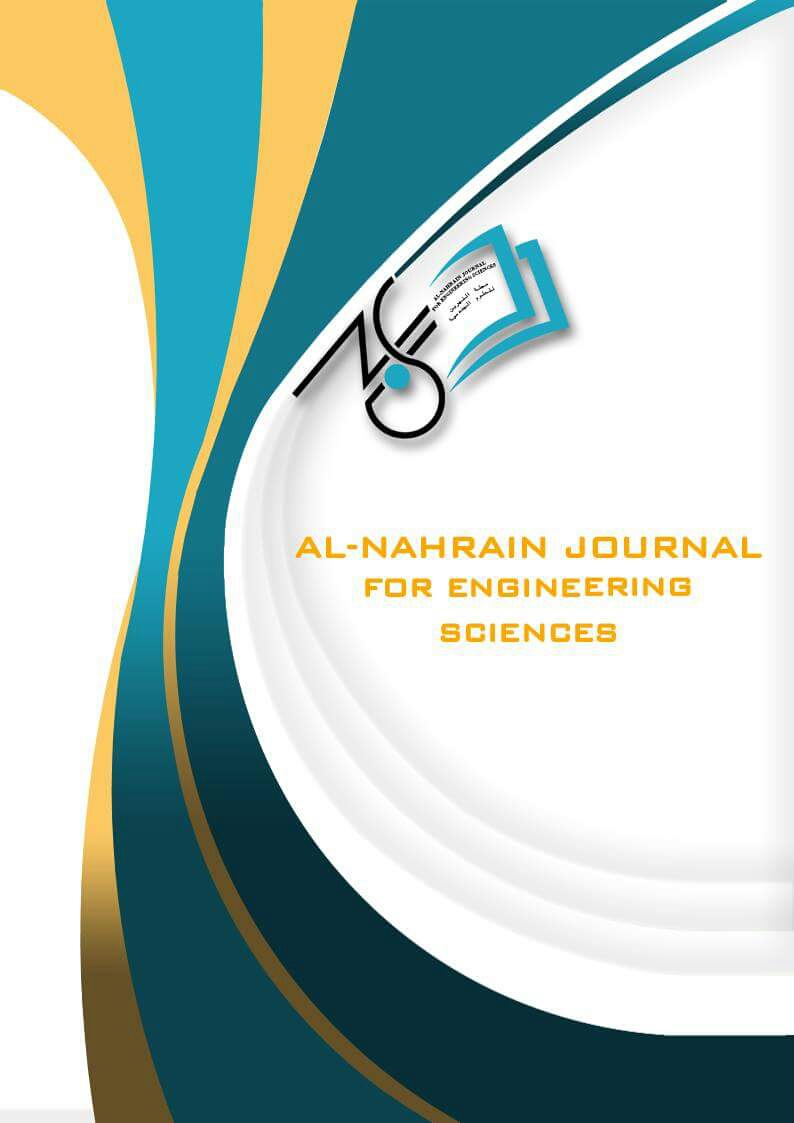Finite Element Analysis of Reinforced Self Consolidation Concrete Beams Having a Horizontal Construction Joint
DOI:
https://doi.org/10.29194/NJES.27020141Keywords:
Construction Joints, Self Compacting Concrete, ANSYS, Finite ElementAbstract
Construction joints are separations between successive concrete pours. They are critical in the building of large concrete structures, since these structures cannot be cast in a single pour. Self-consolidation concrete is a relatively new kind of concrete that is considered suitable for a wide range of construction applications, especially those needing a high early resistance. Certain findings from earlier experimental tests were adopted and analyzed using finite element analysis. ANSYS program was used to analyze the impact of utilizing high strength concrete (fc') and the secondary reinforcement ratio (ρv) on the behavior of reinforced self-consolidating concrete beams having a horizontal construction joint. Nine beams analyzed in this study have the same dimensions (150×180×1200) mm (width× height ×length). Between the two supports, the clear span was 1100 mm. Two-point loads were applied to the simply supported beams during testing. One of the beams acts as a control beam (without a construction joint) and the remaining beams were with horizontal construction joint in the tension zone. The ultimate loads obtained analytically vary by between 3.1% and 7.8 % from those found experimentally. The presence of the horizontal construction joints made the beam less stiff. Utilizing a 70 MPa high strength concrete resulted in a 47.4 % in ultimate load over the experimental value for regular strength concrete (28 MPa). Increasing the ratio of secondary reinforcement (0.01229 to 0.049) resulted in a 10.3% increase in ultimate load magnitude, while decreasing the ratio of secondary reinforcement (0.01229 to 0.0025) with spanning the spacing between stirrups led to a reduction in ultimate load magnitude by 55.8%.
Downloads
References
M. Fintel, Handbook of Concrete Engineering, New York, NY, USA: Van Nostrand Reinhold Company, 1985.
H. Okamura and M. Ouchi, "Self-Compacting Concrete," J. Adv. Concr. Technol., vol. 1, no. 1, pp. 5-15, Apr. 2003.
A. H. Yousifani, "Investigation of the Behavior of Reinforced Concrete Beams with Construction Joints Using Nonlinear Three-Dimensional Finite Elements," Master's thesis, College of Engineering, University of Technology, Baghdad, Iraq, 2004.
Q. Abdul-Majeed, "Evaluation of Transverse Construction Joints of Reinforced Concrete Beams," Eng. Technol. J., vol. 28, no. 14, pp. 4750-4773, 2010.
Q. Abdul-Majeed, L. A. Ghaleb, and M. G. Ghaddar, "Effect of the Number of Horizontal Construction Joints in Reinforced Concrete Beams," Engineering and Technology Journal, vol. 28, no. 19, 2010.
ANSYS, "ANSYS Help," Release 15.0, n.d.
O. S. Farhan, "Behavior of Self Compacting Concrete Deep Beams under Repeated Loading," Ph.D. thesis, College of Engineering, AL-Nahrain University, 2014.
M. Y. H. Bangash, Concrete and Concrete Structures: Numerical Modeling and Applications, Essex, England: Elsevier Science Publishers, 1989.
R. N. Hamedani and M. S. Esfahani, "Numerical Evaluation of Structural Behavior of the Simply Supported FRP-RC Beams," Master's thesis, Royal Institute of Technology (KTH), Stockholm, Sweden, 2012.
K. T. Chong, "Numerical Modeling of Time-Dependent Cracking and Deformation of Reinforced Concrete Structures," Doctoral thesis, University of New South Wales, Sydney, Australia, 2004.
T. Supaviriyakit, P. Pornpongsaroj, and A. Pimanmas, "Finite element analysis of FRP-strengthened RC beams," Songklanakarin J. Sci. Technol., pp. 498-507, 2004.
F. Z. Gigar, "Experimental Investigation of Construction Joints in RC Beams," M.S. thesis, Addis Ababa Univ., Addis Ababa, Ethiopia, 2015.
N. Randl, "Design recommendations for interface shear transfer in MC 2010," Ernst & Sohn, pp. 230-241, 2013. doi: 10.1002/suco.201300003.
D. J. Dawe, Matrix and Finite Element Displacement Analysis of Structures, Clarendon Press, Oxford, U.K., 1984.
Downloads
Published
Issue
Section
License
Copyright (c) 2024 Muhaj Mustafa Abdulmunaam, Omar Shamal Farhan

This work is licensed under a Creative Commons Attribution-NonCommercial 4.0 International License.
The authors retain the copyright of their manuscript by submitting the work to this journal, and all open access articles are distributed under the terms of the Creative Commons Attribution-NonCommercial 4.0 International (CC-BY-NC 4.0), which permits use for any non-commercial purpose, distribution, and reproduction in any medium, provided that the original work is properly cited.














